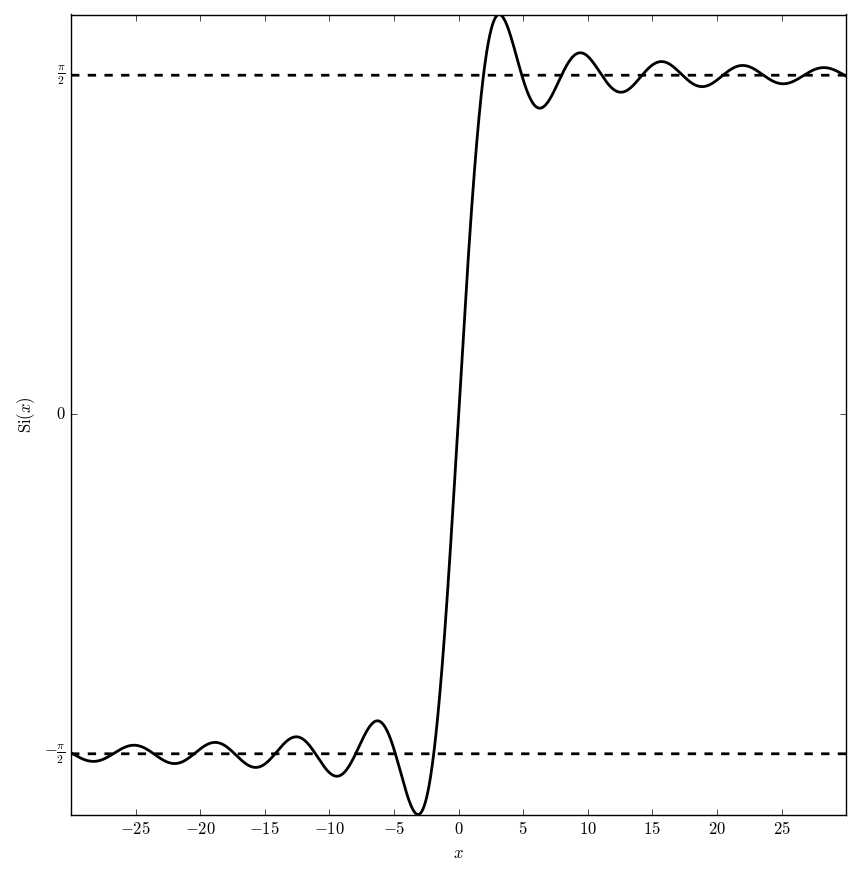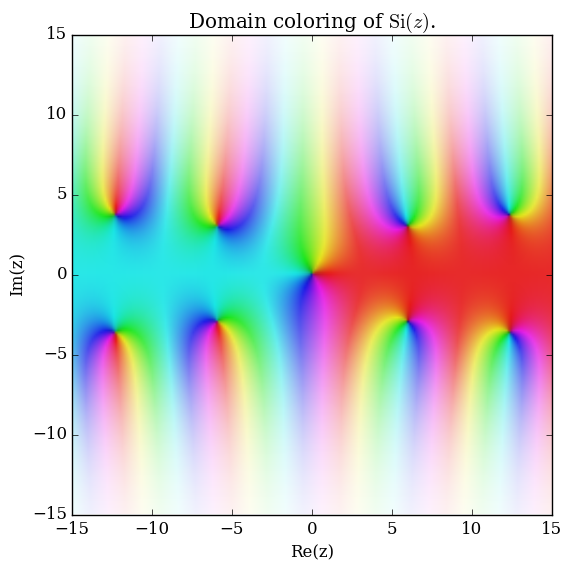Difference between revisions of "Sine integral"
From specialfunctionswiki
| Line 20: | Line 20: | ||
=References= | =References= | ||
| + | * {{BookReference|Special Functions of Mathematical Physics and Chemistry|1956|Ian N. Sneddon|prev=findme|next=findme}}: $\S 5 (5.10)$ | ||
* {{BookReference|Handbook of mathematical functions|1964|Milton Abramowitz|author2=Irene A. Stegun|prev=findme|next=}}: $5.2.1$ | * {{BookReference|Handbook of mathematical functions|1964|Milton Abramowitz|author2=Irene A. Stegun|prev=findme|next=}}: $5.2.1$ | ||
Revision as of 00:42, 25 June 2017
The sine integral is defined by $$\mathrm{Si}(z) = \displaystyle\int_0^z \mathrm{sinc}(t) \mathrm{d}t, \quad |\mathrm{arg} \hspace{2pt} z|<\pi,$$ where $\mathrm{sinc}$ denotes the sinc function.
Domain coloring of $\mathrm{Si}$.
Properties
Derivative of sine integral
Antiderivative of sine integral
Relationship between exponential integral Ei, cosine integral, and sine integral
Videos
Laplace Transform of Sine Integral (2 January 2015)
References
- 1956: Ian N. Sneddon: Special Functions of Mathematical Physics and Chemistry ... (previous) ... (next): $\S 5 (5.10)$
- 1964: Milton Abramowitz and Irene A. Stegun: Handbook of mathematical functions ... (previous): $5.2.1$

